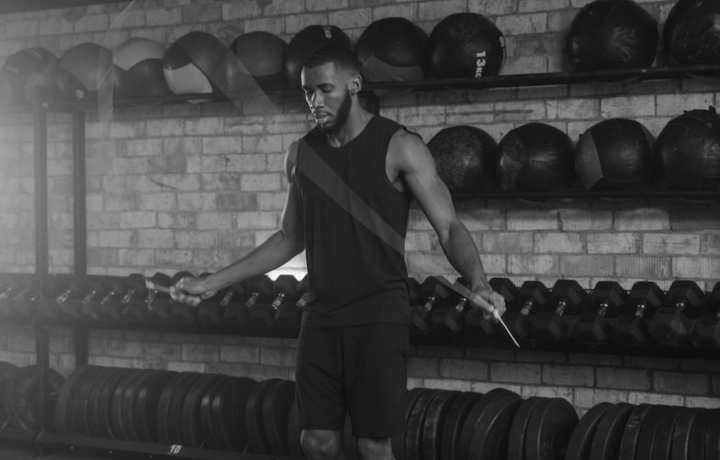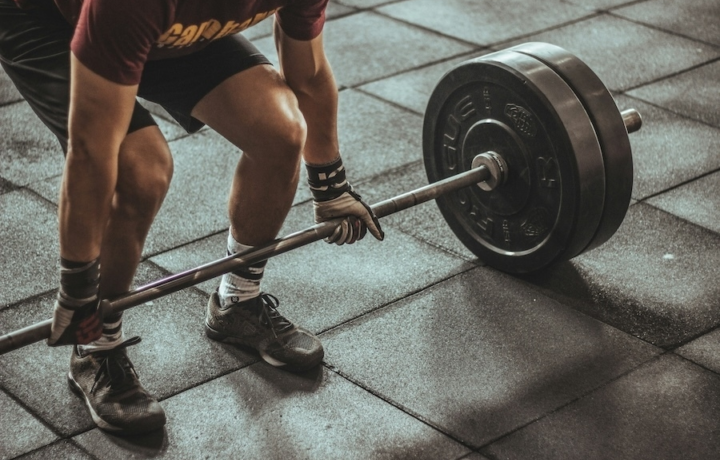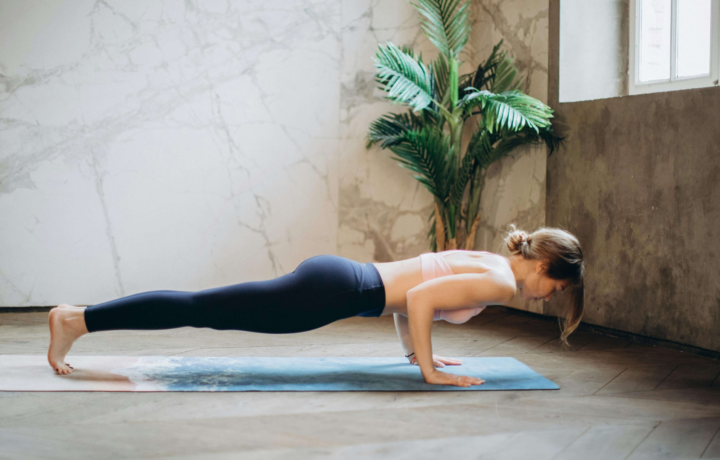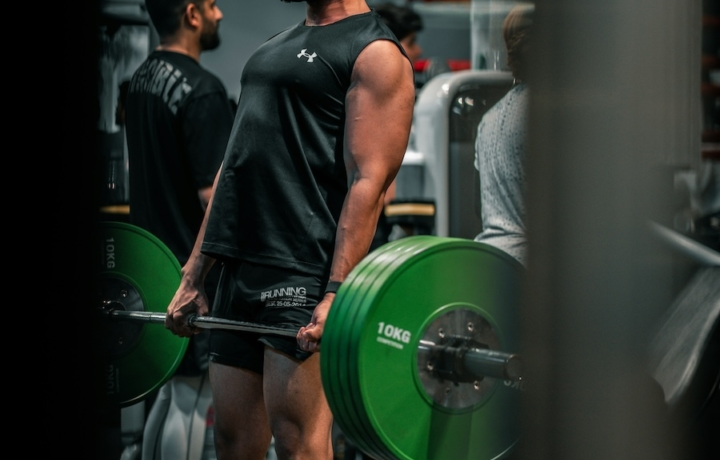Exercise
Glute Bridge Abduction

Glute Bridge Abduction
How to Perform
- Lie on your back with your knees bent, feet flat on the floor hip-width apart, and arms at your sides with palms facing down.
- Engage your core muscles by drawing your navel toward your spine and press your lower back into the floor to maintain a neutral spine position.
- Push through your heels to lift your hips off the ground until your body forms a straight line from your shoulders to your knees, exhaling as you rise.
- At the top of the bridge position, keep your glutes contracted and ensure your weight is distributed evenly across both feet.
- While maintaining the bridge position, slowly open your knees outward without letting your hips drop, creating an abduction movement at the hips.
- Control the movement by using your outer glutes and hip abductors, keeping your feet firmly planted on the floor throughout the entire exercise.
- Return your knees to the starting position while maintaining the bridge height, inhaling as you bring them back together.
- Perform the prescribed number of abductions before lowering your hips back to the floor with control, or maintain the bridge position for additional repetitions.
Important information
- Keep your core engaged throughout the entire exercise to protect your lower back and maintain proper form.
- Focus on the squeeze in your glutes at the top of the movement rather than how high you lift your hips.
- If you feel any discomfort in your lower back, lower your hips slightly or place a small cushion under your tailbone.
- Make sure your knees track in line with your toes during the abduction movement to prevent knee strain.

Glute Bridge Abduction
Exercise Details
Primary Muscles
Muscle Groups
Mechanic
Built for progress
Take the guesswork out of training
Create personalized AI-powered workout plans that evolve with you. Train smarter, track every rep and keep moving forward, one workout at a time.






The Glute Bridge Abduction combines the fundamental glute bridge with lateral movement, creating an effective exercise that targets both the gluteal muscles and the hip abductors simultaneously. This beginner-friendly movement serves as an excellent foundation for those looking to strengthen their posterior chain while adding an element of hip stability work. When performed correctly, this exercise primarily engages your glutes (especially the gluteus maximus and medius) while also activating the abductor muscles along the outer thigh. The addition of the abduction movement intensifies the work on the often-neglected gluteus medius, which plays a crucial role in hip stabilization and proper movement patterns during daily activities and athletic performance. What makes the Glute Bridge Abduction particularly valuable is its versatility across different fitness goals.
For bodybuilders, it helps develop the muscular definition and symmetry of the glutes and outer thighs. Recovery specialists appreciate how it strengthens potential weak links without excessive joint stress. As a warm-up exercise, it activates key muscle groups before more demanding lower-body training, reducing injury risk and enhancing performance in subsequent movements. The strength benefits extend beyond aesthetic improvements. Regular practice strengthens the posterior chain, improves hip stability, and can help correct common movement imbalances that lead to compensation patterns. Many people experience enhanced athletic performance and reduced lower back discomfort after incorporating this exercise consistently into their routines.
For those new to fitness, the Glute Bridge Abduction offers an accessible entry point to lower-body training without requiring complex equipment or technical expertise. As strength develops, resistance can be added through bands or ankle weights to continue challenging these muscle groups. The exercise's focus on controlled, deliberate movement makes it particularly effective for establishing the mind-muscle connection necessary for more advanced glute training later in your fitness journey.
FAQ - Glute Bridge Abduction
The Glute Bridge Abduction primarily targets the gluteus maximus and gluteus medius, while also engaging the outer hip abductors. This combination makes it particularly effective for building hip stability and improving the mind-muscle connection with your posterior chain muscles.
You can increase difficulty by adding resistance bands around your thighs, using ankle weights, extending your hold time at the top position, or increasing your rep range. For advanced progression, try elevating your shoulders on a bench or incorporating single-leg variations.
The most common mistakes include rounding your lower back, rotating your hips instead of keeping them square, rushing through the movement, and not hinging properly at the hips. Focus on maintaining a neutral spine, moving with control, and keeping your standing knee slightly soft rather than locked.
For optimal results, incorporate this exercise 2-3 times weekly, either as part of your lower body training days or as an activation exercise before compound movements. Most people see benefits with 2-4 sets of 12-20 repetitions per session, adjusting based on your fitness level.
When performed with proper form, this exercise is generally safe and can actually help strengthen muscles that support the lower back. Keep your core engaged throughout the movement to protect your spine, and avoid excessive range of motion if you experience discomfort. Always consult a healthcare provider if you have existing back conditions.















